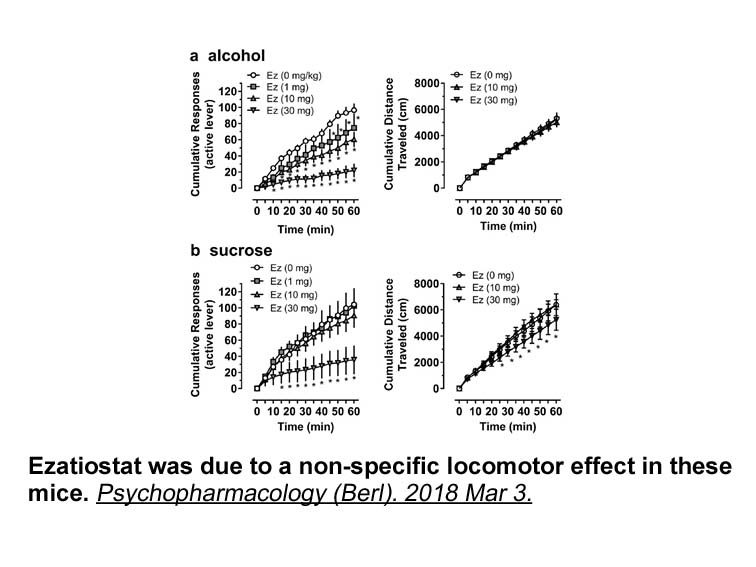Archives
It is well known that GPCR responsiveness desensitizes after
It is well known that GPCR responsiveness desensitizes after prolonged exposure to agonists through several mechanisms such as receptor phosphorylation, arrestin binding and internalization (Dhami and Ferguson, 2006). Therefore, in the present work we decided to study whether group I-mGluR signaling pathway resulted affected in neonatal thiostrepton after maternal l-Glu intake during lactation. Results obtained have shown that maternal l-Glu intake evoked a loss of mGluR1 in male neonates which was also accompanied by a loss of group I mGluR functionality whereas no significant variations were observed in female neonates.
mGluR functionality whereas no significant variations were observed in female neonates.
Materials and methods
Results
Data obtained from the loss of liquid from the drinking bottles revealed that lactating rat drank an average of 72 ± 6 ml/Kg day of l-Glu during lactation. This value was not statistically significant from obtained in control rats which drank tap water (76 ± 4 ml/Kg day). Since l-glutamate was prepared in the tap water at a final concentration of 1 g/L, lactating rats received, therefore, an average dose of 72 ± 6 mg/Kg day of l-Glutamate. Taking into account that previous works have estimated that the human daily intake of l-Glutamate oscillates between 2.2 to 12 g (He et al., 2011; Beyreuther et al., 2007), and considering 75 Kg as normal human weight, the values of human daily l-Glutamate consumption could be estimated as 30–160 mg/Kg day. As it can be observed, the dose received by lactating rats is within of the range of daily consumed by humans.
Concerning neonatal rats, maternal l-glutamate intake did not significantly affect litter size or newborn survival. Besides, weights of pups and negative geotaxis reflex, an index of neurobehavioral development, were not significantly different between groups (Fig. 1A–D). Finally, l-glutamate level was measured in plasma from neonates using Red Glutamic Acid/ Glutamate oxidase assay kit. As shown in Fig. 1E, maternal l-Glu intake during lactation significantly increased plasma l-Glu level in both male and female neonates (male: from 0.08 ± 0.1 nmol/mL to 0.46 ± 0.06 nmol/mL, p < 0.01; female: from 0.04 ± 0.03 nmol/mL to 0.27 ± 0.01 nmol/mL, p < 0.05), being this increase significantly higher in male neonates (0.46 ± 0.06 nmol/mL vs. 0.27 ± 0.01 nmol/mL, p < 0.05).
Discussion
In the last decades different groups of experts, including the Joint FAO/WHO Expert Committee on Food Additives, have stated that glutamate consumption is safe for humans (Beyreuther et al., 2007; Brosnan et al., 2014; Walker and Lupien, 2000). However, the debate about the effects that maternal glutamate intake could induce on the offspring remains alive. Thus, several works have shown that maternal oral glutamate consumption induce several effects in the neonates including a weight loss, a decrease in growth hormone secretion and an impairment in Y-maze discrimination learning (Hermanussen et al., 2006; von Diemen and Trindade, 2010; Yu et al., 1997). It is also interesting to note that, whereas the glutamate exchange between maternal and fetal blood throughout placental barrier is well-known (Battaglia, 2002; Battaglia and Regnault, 2001), there are less data about the possible accumulation and/or glutamate transfer to suckling neonates via maternal milk. In that sense, it is relevant the work carried out by Maucher and Ramsdell (2005) who showed that domoic acid, a glutamate analogue is able to reach neonates throughout maternal milk.
In the present work a significant decrease in mGluR1 density was detected in brain from male neonates after maternal oral consumption of glutamate during lactation. However, we could not confirm if milk composition could be changed by maternal l-glutamate consumption during lactation since procedures to collect milk from rat dams involves maternal oxytocin injection or a long dam-pup separation period which could modify results. Furthermore, a loss of group I-mGluR functionality was also observed. Taken together, both results suggest that maternal glutamate intake could reach neonatal brain through maternal milk since receptor down-regulation and the consequent desensitization is a widely observed process following agonist exposure (Ferguson, 2001). Supporting this hypothesis, results obtained in this work have shown that glutamate plasma level are significantly increased in neonates exposed to maternal l-glutamate. Besides, although at birth, brain-blood barrier (BBB) is nearly complete, it has also been suggested that during early development BBB could behave as a leaky structure in order to cover the high demand of nutrients for brain growth (Zheng, 2002).